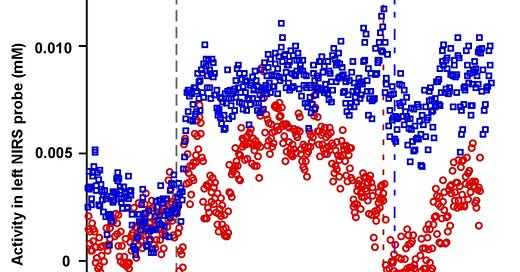Meanwhile, if you read this on paper, you will probably have sighed by now.
People wonder from time to time whether there is a difference if you read something on a smartphone, as we all do increasingly often, or if you read the same text on paper. Well, a group of researchers decided to do something about it and conducted experiments, where they asked 34 persons to read an excerpt from a novel, once on a smartphone and another time on paper. After the participants had read the excerpt, they were asked a couple of comprehension questions about the text. But to make things fun and interesting, the researchers also measured how often participants sighed, their breathing in general, and their brain activity in the forehead.
They found that people who read the excerpt on paper sighed more often than people who read the excerpt on a smartphone, possibly because of a feeling of general superiority over the poor fellows who can’t even put their smartphones aside during an important academic research experiment. Unfortunately, that’s not quite correct. People who read the text on paper sighed more often because they were adjusting their breathing and their mental focus.
Participants who read the text on a smartphone were mentally busier, with their forehead heating up more, indicating more intense blood flow and increased activity in this area of the brain. The frontal cortex is the location in the brain that makes sense of complex tasks and is involved in things like logical thinking and other higher cognitive functions. So, the people who read the text on a smartphone were more involved and understood more of the content. Wrong.
Reading texts on a smartphone requires more concentration and is harder for your brain because the text comes along with more distracting features like the blue light emitted by the smartphone. This makes it harder to just read the text and the brain must work overtime to digest all the different stimuli. Thus, people are not concentrating as much on the content itself and as a result, have a worse understanding of the content of the text than people who read the same text on paper.
The Cambria Value and Momentum ETF (VAMO) utilizes a quantitative approach to actively manage a portfolio of domestic equities. VAMO combines the value and momentum factors and additionally can tactically hedge the equity portfolio with strict risk control methods that are completely systematic. Learn how AMO can help your portfolio. Distributed by ALPS Distributors Inc. View Prospectus here
Indeed, the people who read a text on paper can expend more of their mental resources on the content of the text and introspection. This introspection subconsciously allows them to realise when they are losing focus. Taking a sigh and readjusting their breathing then helps to re-focus. People who read a text on a smartphone didn’t do that as often because they were simply too busy to listen to their bodies, so to say.
In my job, I have to read a large number of texts, all of which tend to be more complex to understand than a novel. If I read this on my smartphone, I may think I understand what I am reading, but I am most likely missing some crucial information. If I read the same text printed out on paper, I probably catch more of the information and can make better investment decisions. So, the next time, somebody tells you to go paperless in the office, print out the text, read it and use your spare capacity in your frontal lobe to think about an insult where they can stick their paperless office. I for one will continue to read important stuff on paper, not on a screen.
Brain activity in the forehead when reading a text on a smartphone (S) or on paper (P)
Source: Honma et al. (2022)






Tks for the professional explanation. Honestly I always had the same behaviour but I thought it was more related with my age, not being a digital native but an "adapted digital".
Now I know why I do so. Tks
What about an e-reader then? I still use an old one with no backlighting.